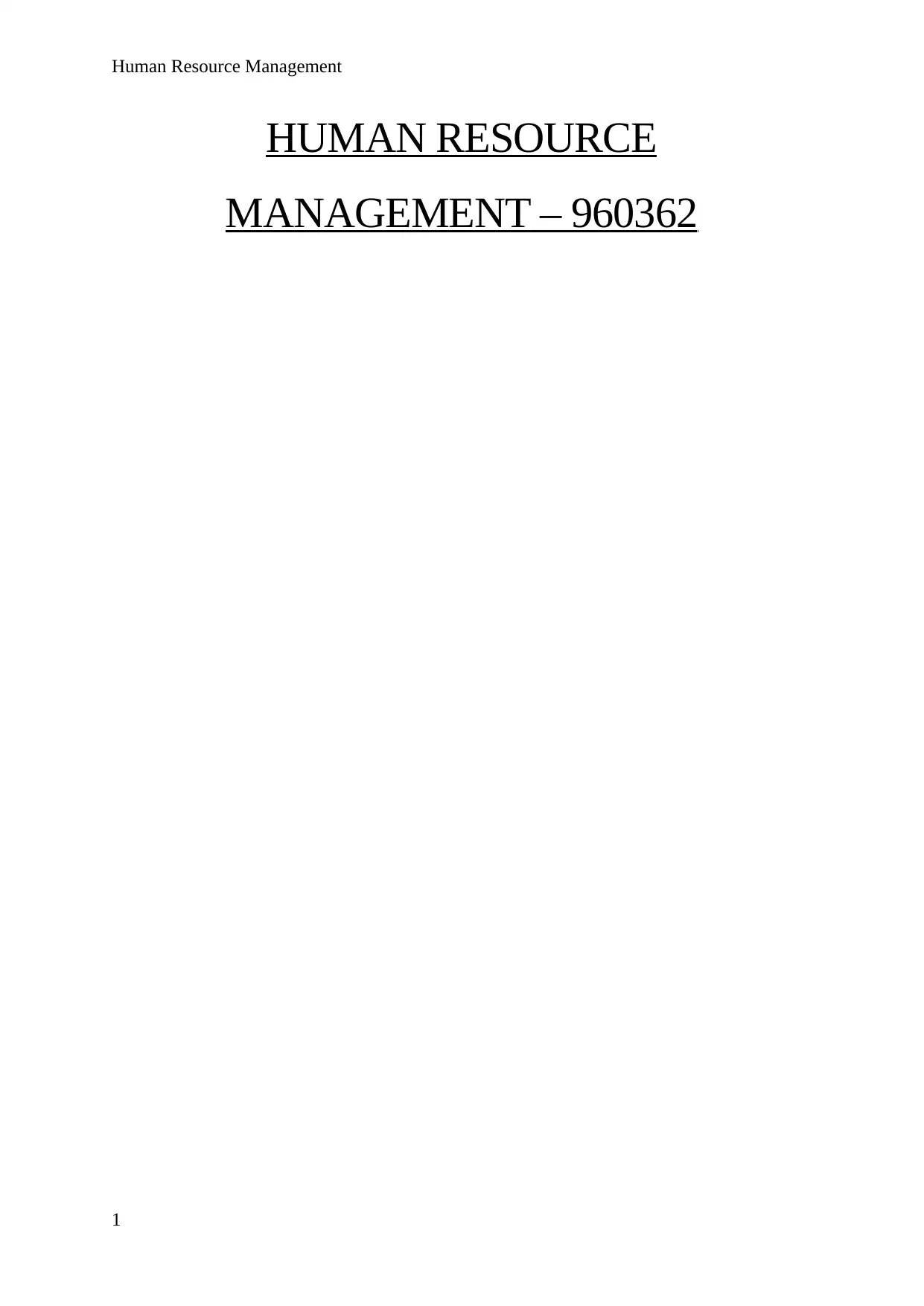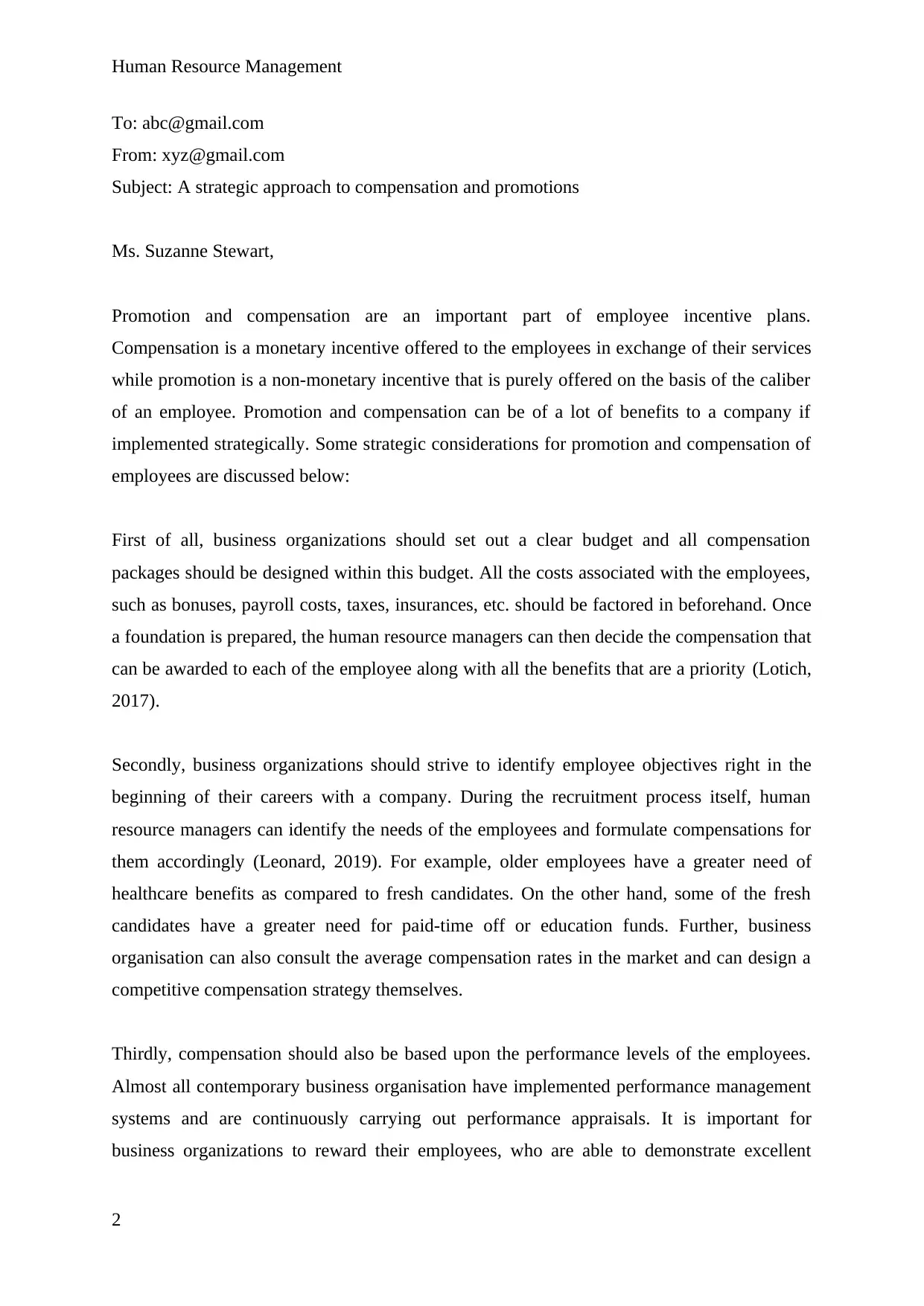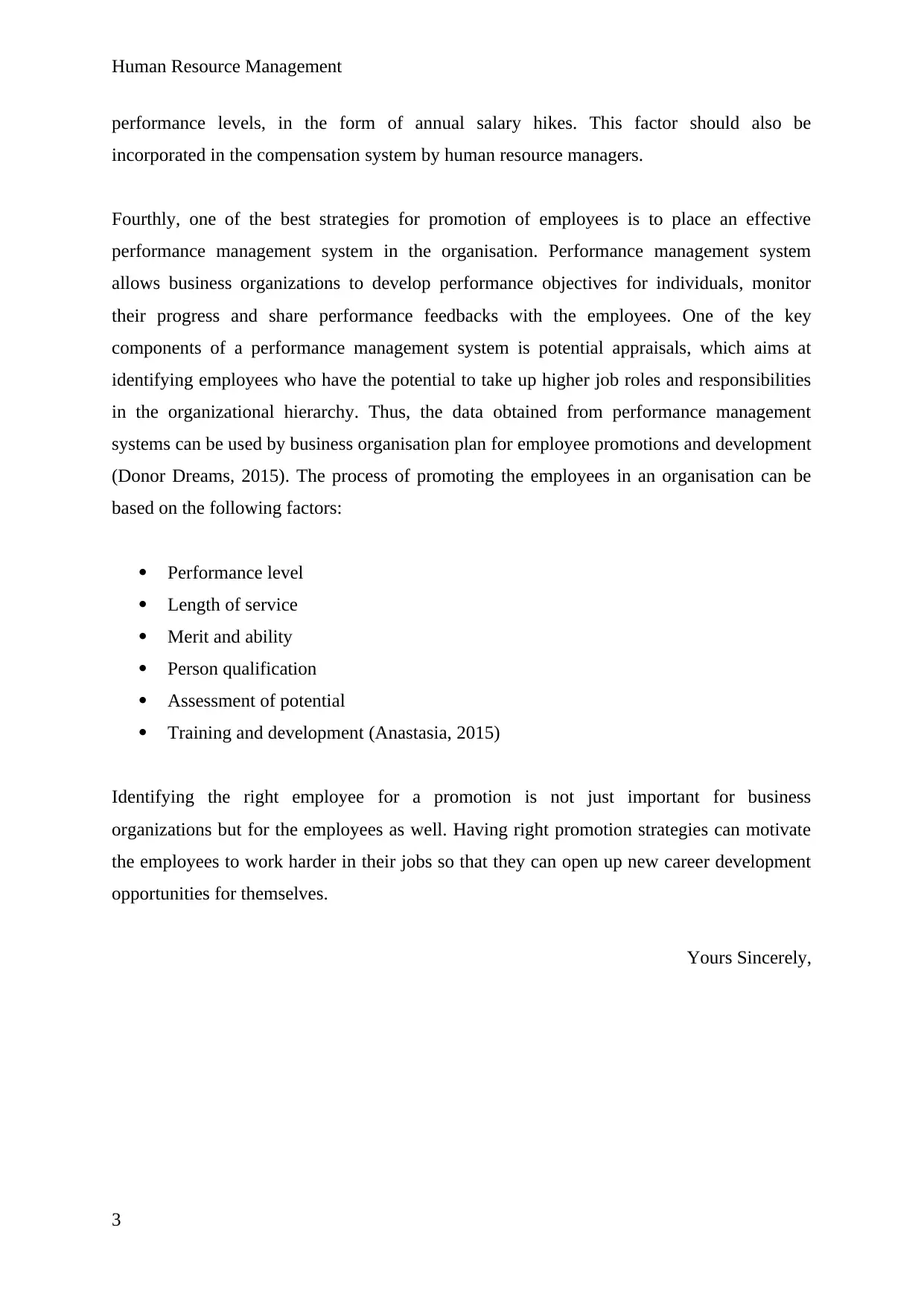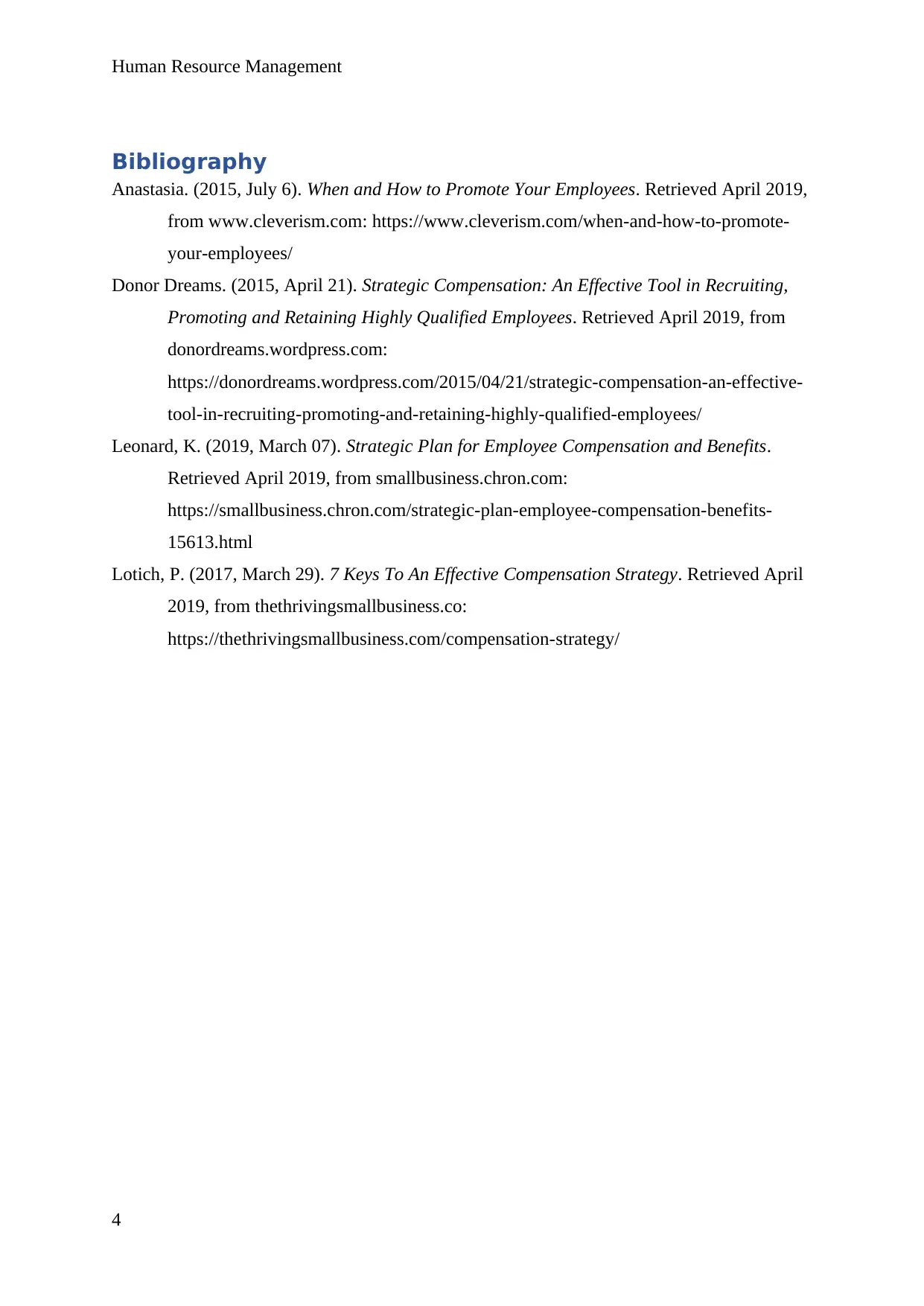A Strategic Approach to Compensation and Promotions in Human Resources
VerifiedAdded on 2023/01/20
|4
|722
|71
Report
AI Summary
This report examines a strategic approach to compensation and promotions within Human Resource Management. It emphasizes the importance of these incentives for employee motivation and retention. The report suggests several strategic considerations, including setting a clear budget for compensation packages, identifying employee objectives from the start, benchmarking compensation against market rates, and linking compensation to performance levels. It also highlights the role of performance management systems in identifying employees for promotion based on factors like performance level, length of service, and potential. The report concludes by underscoring the significance of effective promotion strategies in motivating employees and fostering their career development. The report also includes a detailed bibliography of sources used.
1 out of 4










![[object Object]](/_next/static/media/star-bottom.7253800d.svg)